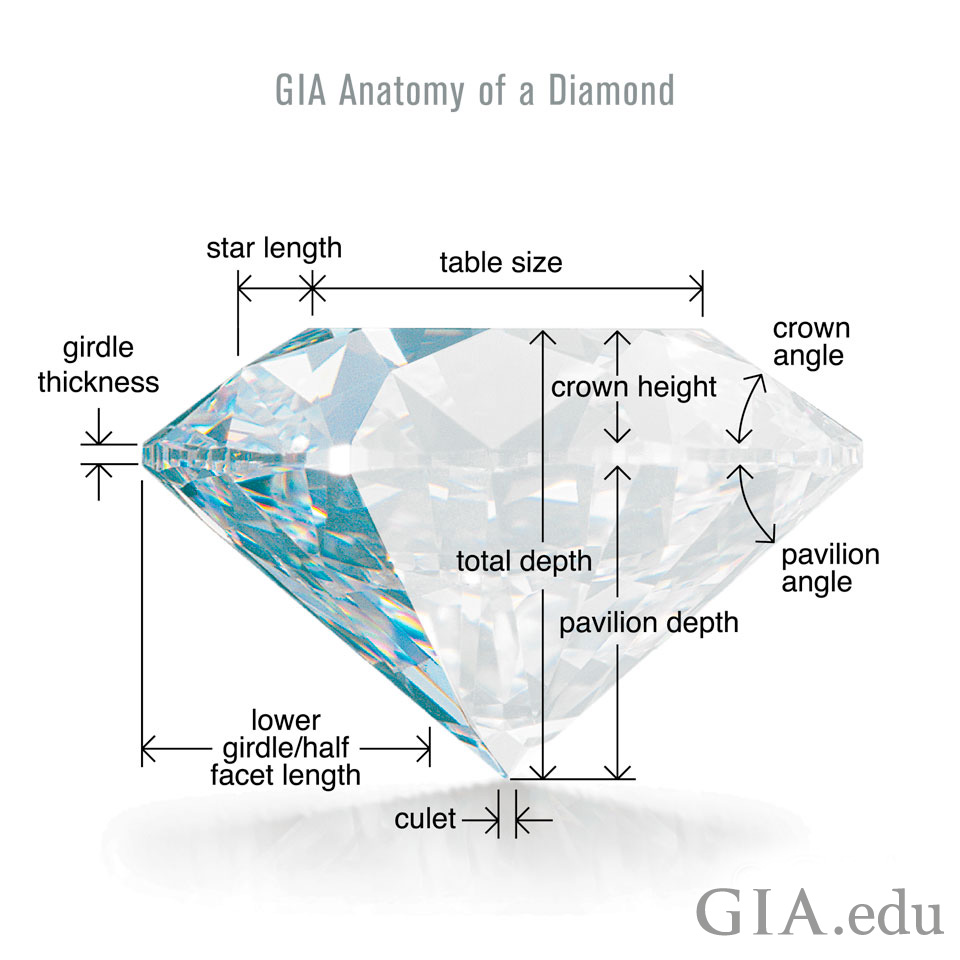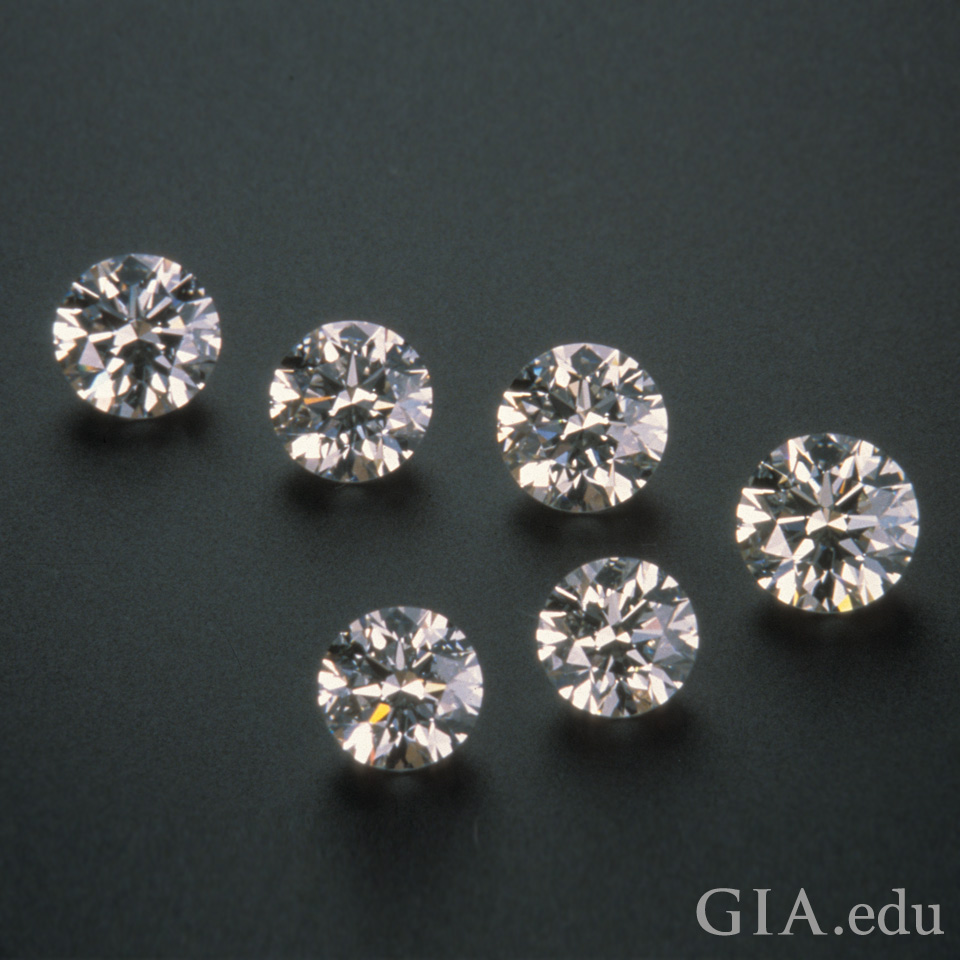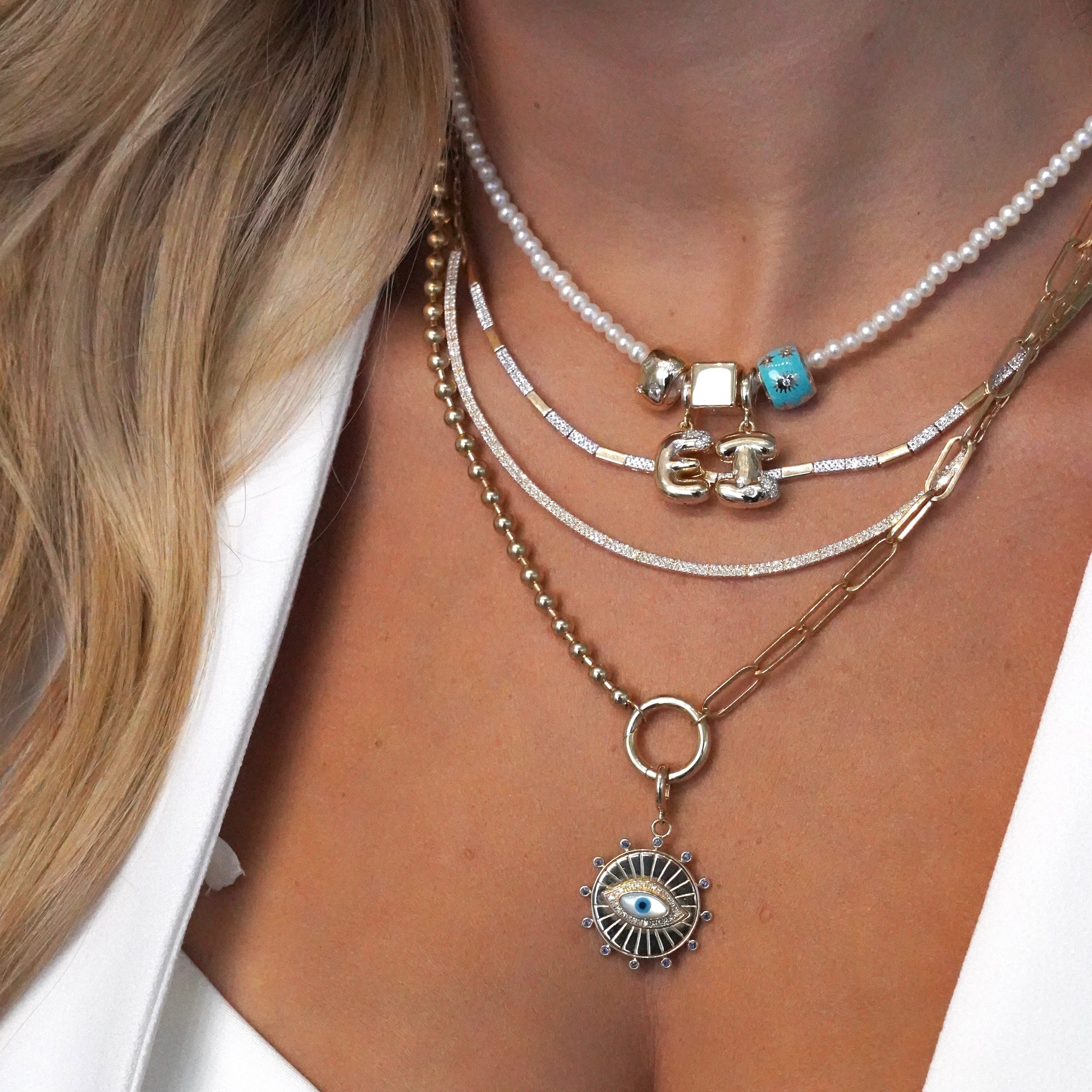Diamond Education: Diamond Grading and Cut Grades
Diamond jewelry shopping can be an exciting and fun experience. The gemstones glimmer at you from the case and it can be hard to choose just the right one. If you’re looking for a diamond, remember the importance of learning about the 4Cs of diamond quality and getting an independent diamond grading report. A GIA diamond grading report provides an objective, unbiased assessment of the diamond’s 4Cs – and can help you make the right purchase decision.
Each GIA report is unique to the diamond it describes, and contains a wealth of information to help you understand the features and qualities of your specific diamond. In a prior post, we explored the clarity information on GIA Diamond Grading reports, including clarity grades and scales, and plotting diagrams, in addition to GIA grading methods for clarity.
Here, we will take a deeper look at how diamond cut grading information is presented for standard round brilliant diamonds in the D-to-Z color range and describe what goes into GIA’s diamond cut grading process. With the information in this post, you will learn what diamond grades are and understand how diamond cut is presented in a GIA diamond grading report.
I. The Factors That Influence Diamond Cut Quality
Think of a diamond as an arrangement of tiny angled mirrors. A standard round brilliant cut diamond has 57 or 58 of them – what gemologists call “facets.” These facets reflect light off of each other, bounce light into the diamond, break up the light into a spectrum of colors, and return light back up to your eye.
It’s an incredible light show that changes with the slightest movement by you or the diamond. This is how light affects a diamond’s appearance.
Facets are the key to a diamond’s cut quality. Their angles, size, and arrangement to each other, as well as the quality of their surfaces in addition to other factors, are critical in delivering that sparkle you expect to see when looking at a diamond face up.

Refer to this diagram, GIA Diamond Anatomy, for a closer look at the some of the elements that inform a diamond’s cut grade.
In determining a cut grade for standard round brilliant cut diamonds in the D-to-Z color range, GIA takes into account:
- How well the diamond interacts with light:
- Its brightness or how white light reflects from the diamond
- Its fire or the scattering of white light in all the colors of the rainbow
- Its scintillation or the pattern of light and dark areas caused by reflections within the diamond
- How well the diamond is designed, faceted, and crafted:
- The diamond’s weight relative to its diameter
- The diamond’s girdle thickness which affects its durability
- The symmetry of the diamond’s facet arrangement, including the angles and relative positions of all the facets
- The quality of the polish on the facets
Together, these factors determine a diamond’s overall cut grade.
GIA Cut Grading Methods
- Under tightly controlled lighting and viewing conditions, trained graders use a combination of highly calibrated optical measuring devices and visual observations to capture the data relevant to assessing a diamond’s overall cut quality.
- An optical measuring device captures 400 contour images of the diamond and reassembles them into a 3-D image of the stone, from which it extracts the data it needs to determine the diamond’s overall measurements and its average proportions.
- Visual observations are used to evaluate polish, symmetry, and girdle thickness.
How GIA Reports Describe Cut
GIA provides an overall cut grade for standard round brilliant cut diamonds in the D-to-Z color range. The cut grade appears as either: Excellent, Very Good, Good, Fair, or Poor.
For a diamond to be graded as ‘Excellent’, the top category, a diamond must exhibit an even pattern of bright and dark areas.
Additional Cut-Related Information on GIA Reports
In addition to an overall cut grade and scale, a GIA diamond grading report provides deeper insight into the variables that affect your diamond’s cut grade. Get to know them below:
SHAPE & CUTTING STYLE:
Diamond shape refers to the outline of the stone when viewed face up. Cutting style refers to its facet arrangement. For example, the terms “round brilliant” describe a round-shaped stone faceted in the brilliant style with 57 – 58 facets

MEASUREMENTS:
Described in millimeters to two decimal places, a diamond’s dimensions are listed as “minimum diameter – maximum diameter x depth” for round diamonds and “length x width x depth” for fancy-shaped diamonds. The carat weight of the diamond relative to its diameter is how diamond graders determine the weight ratio, which is one of the factors the influence a diamond’s overall cut grade.

Remember the tiny mirrors we call facets? A diamond’s proportions, or the angles and relative measurements of the diamond’s facets, contribute to their interaction with light. Every GIA diamond grading report provides a diagram showing the diamond’s proportions. The diagram also describes the diamond’s girdle thickness, which affects durability.
TIP: As you’re comparing diamonds, it’s important to remember that diamonds with different proportions can have similar cut grades. So you should look beyond the numbers on a report and view the diamond in person to see if it’s the right choice for you.
POLISH:
Describes the overall quality and condition of the facet surfaces, including an evaluation of any blemishes resulting from the polishing process or during wear. Polish is rated on a scale ranging from Excellent to Poor.
SYMMETRY:
Evaluates the exactness of the diamond’s outline, and the shape, placement, and alignment of its facets, and is assessed on a scale of diamond grades ranging from Excellent to Poor. A round brilliant diamond should have a symmetrical outline. If you were to think of it as a pie with eight slices, all eight sections should match each other.
TIP: Ex Ex Ex or Triple Ex: You’ll hear these terms to describe diamonds with an Excellent overall cut grade, and Excellent polish and Symmetry grades.
Non-standard Round Brilliant Cut Diamonds
At this time, an overall cut grade for non-standard round brilliant diamonds or fancy shaped diamonds such as rectangular, oval, or square, is not available on GIA grading reports. But reports do contain an assessment of the diamond’s polish and symmetry; a description of its shape and cutting style; its measurements; and a simplified proportion diagram containing a description of girdle thickness.
Diamond Cut – Beauty is in the Eye of the Beholder
The overall beauty of a diamond lies in its cut quality, but cut is the most difficult and complicated “C” to assess because many variables go into determining a cut grade. When GIA developed its diamond cut grading system, it conducted tens of thousands of observations of real diamonds, with people providing input as to what they thought were the best looking diamonds.
So, the system tells you what most people like, not necessarily what you may like. This is important as there are many visual choices to consider. Carefully observe those diamonds that have high cut grades – they are often a little different from each other. You may even prefer a diamond with a lower cut grade.
Ultimately, beauty is in the eye of the beholder. Ultimate, beauty is in the eye of the beholder, so you should use a grading report in conjunction with your own visual observation to gauge how well a diamond performs for you.
Source:“Gia Diamond Grading Reports: Understanding Diamond Cut Grades.” GIA, 9 Dec. 2019, https://4cs.gia.edu/en-us/blog/gia-diamond-grading-reports-understanding-diamond-cut-grades/.








